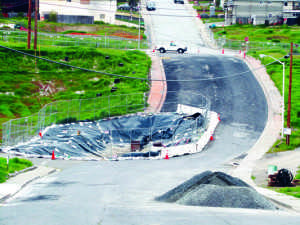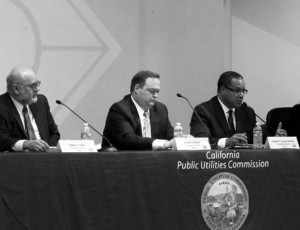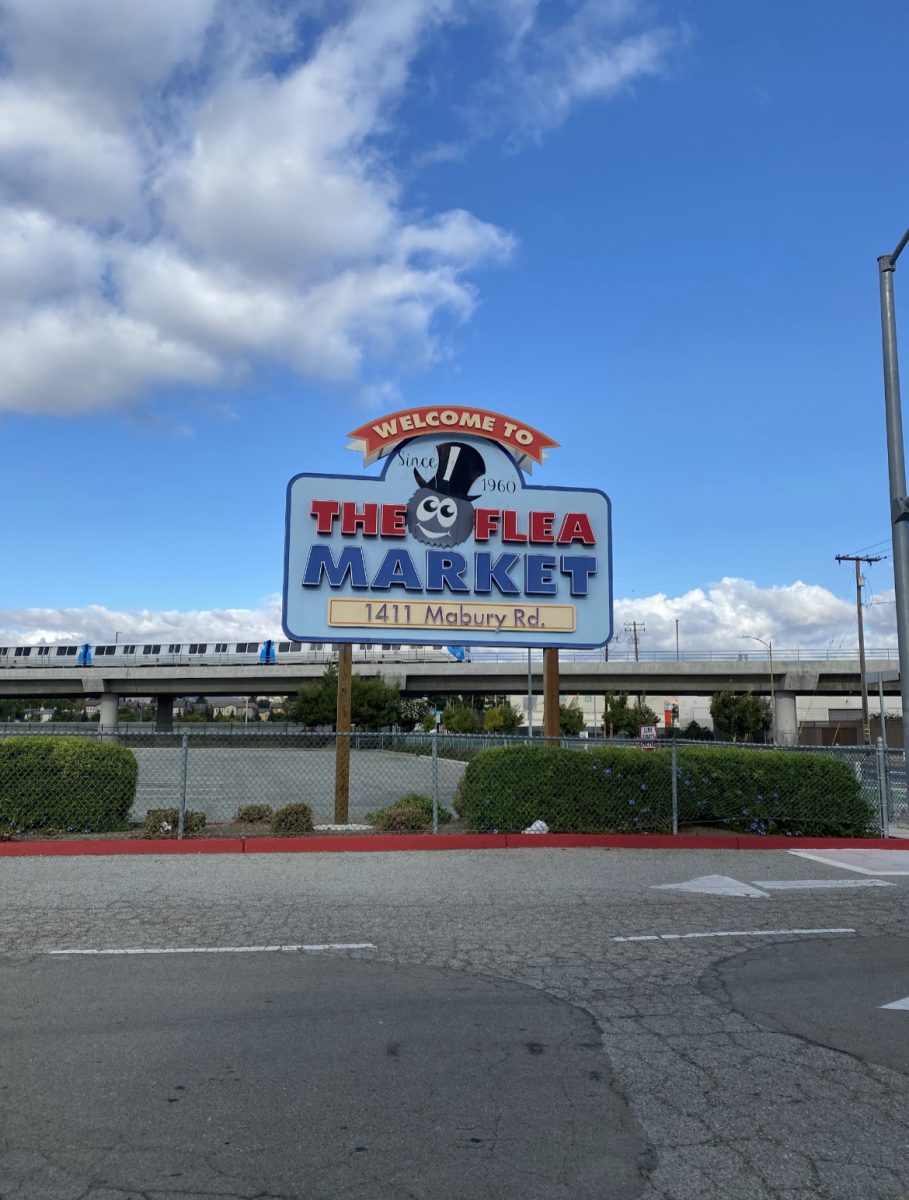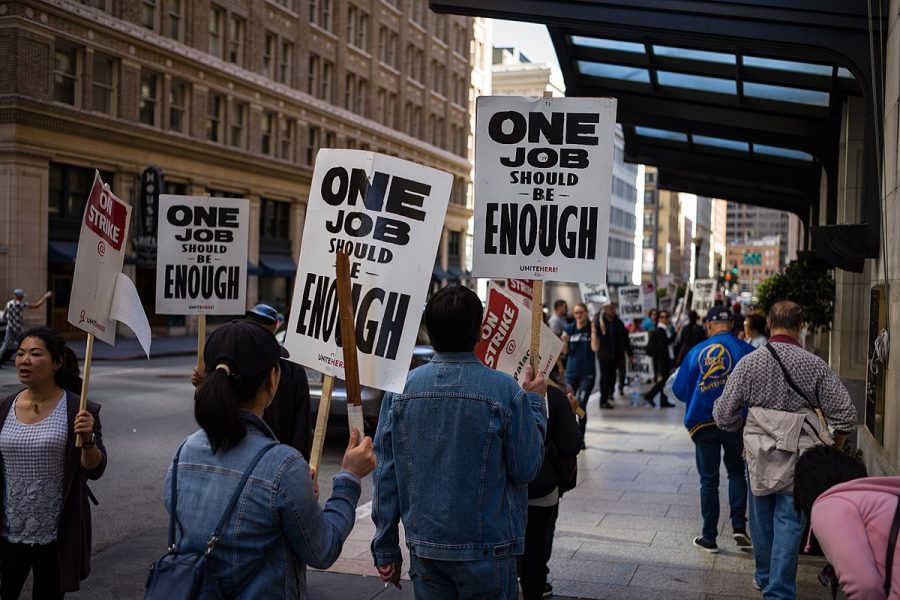
It has been almost seven months since the tragic natural gas pipeline explosion in San Bruno, and the physical and emotional scars have yet to heal.
On Tuesday, the California Public Utilities Commission held a special hearing at the San Bruno Senior Center about a mile and a half from the decimation at the intersections of Claremont and Glenview Dr. to give local residents a chance to voice their opinions.
The five person commission was first to speak, each member being brief and consoling.
“I am personally and professionally committed to making sure that the horrible tragedy of September 9 never happens again,” pledged Commissioner Mike Florio, who stated that he knew Jacqueline Greig, who was one of the eight people who died as a result of the explosion. “We come to San Bruno because it was the best place in California to examine natural gas safety.”
“Like everyone else, I watched the events take place on TV,” said Commissioner Catherine Sandoval, who wanted to be seen as just another concerned citizen. “My heart bled that night.”
Sandoval did not have to remind the residents of San Bruno that the remnants of the blast are still visible. “[We are] able to go to the empty sight to see where people once lived, where children once played.”
The immediate area around the intersection of Glenview and Claremont Dr. remains blocked off, as if it was the scene of a crime that has yet to be solved. Large holes in the ground expose a section of the pipeline which is currently under investigation by the CPUC and the National Transportation Safety Board.
The most visceral reminders of the terror that ripped through the foggy hillside come from the people who lived through it.
Chris Torres does not believe that CPUC is doing enough to hold Pacific Gas & Electric accountable for his mother’s, Elizabeth Torres, death. Torres was lost to the fire and his two sisters were severely burned.
“There’s nothing left, everything is gone,” said Torres as he fought to hold back the emotion of his family’s loss, “I want something to be done”. Torres was unflinching in his criticism of PG&E.
“I know they’re going to do the best they can to pacify us. That’s what they do,” he said ,reminding the commission that the company had received millions of dollars in the years leading up to 2010 to upgrade their system of pipelines.
“When they got the money to do something, they should have done it then. Where did the money go?”
Bill Magoolaghan also knows firsthand the devastation of the blast.
“I’m from 1600 Claremont. Or, at least I was from 1600 Claremont.”
Magoolaghan’s wife and four children were sitting down for dinner on the evening of September 9 when their block was consumed by fire. Betti Magoolaghan had to escape barefoot with her children before their home was completely destroyed.
“I’m here because I want to be part of the solution. I want to put a face on the houses that were burned,” he said, noting that it was his neighbors who were among the deceased.
Although Magoolaghan received permission to start rebuilding his house last month, he is not ready to let PG&E off the hook.
“The top two people at PG&E make enough in two years to pay back the fine that the PUC is threatening to levy.” He believes that the CPUC needed to focus on educating safety officials in order to prevent future tragedies.
“Without legislation in place, this whole process here is useless,” said Magoolaghan.

Although U.S. Representative Jackie Speier has no doubts that PG&E will implement new safetey measures, the multibillion dollar corporation took a verbal beating at the hearing.
PG&E officials, who were notably absent at Tuesday’s event, have been vocal in their commitment to improve pipeline safety without acknowledging guilt for the accident.
“We’ve got a lot of things in place to improve the integrity of our pipeline system, but we still continue to work with the NTSB and look forward to their final analysis of what actually happened in San Bruno,” said Vice President of Engineering and Operations Kirk Johnson.
In October, PG&E launched their “Pipeline 2020 Program,” which calls for a major upgrade of their network throughout California, which includes the replacement of manual valves with remote and automatic shut off systems.
“We feel that there is a need for a more rigorous process for regulating the safety of pipelines,” said San Bruno Vice Mayor Michael Salazar.
“This is a wakeup call. I don’t believe any of us are truly aware of what lies beneath us.”
People in Hayward may be unaware of that natural gas pipelines run underneath their city. Major lines are under Industrial Blvd., Hesperian Blvd. and directly under the heart of downtown Hayward.
Although Hayward does not appear in PG&E’s list of 100 high-risk pipe segments, a pipeline does intersect with the Hayward fault just east of the intersection of C St. and Mission Blvd.
“There will always be tension between the cost of safety and the cost to rate payers,” said California Assemblyman Jerry Hill, who was not about to let PG&E off the hook. He stated that the company had high rates and a bad safety record.
The Assemblyman was also critical of the CPUC. “I have concerns that the CPUC is still negotiating deals with public utilities companies behind closed doors.”
Similar questions and concerns have been raised, but continue to go unanswered.
For the people of San Bruno and the surrounding area, the pain of September 9 is mitigated by their desire to prevent future accidents. The real test will be if the necessary steps are taken in the years to come, when safety continues to be weighed against cost.










